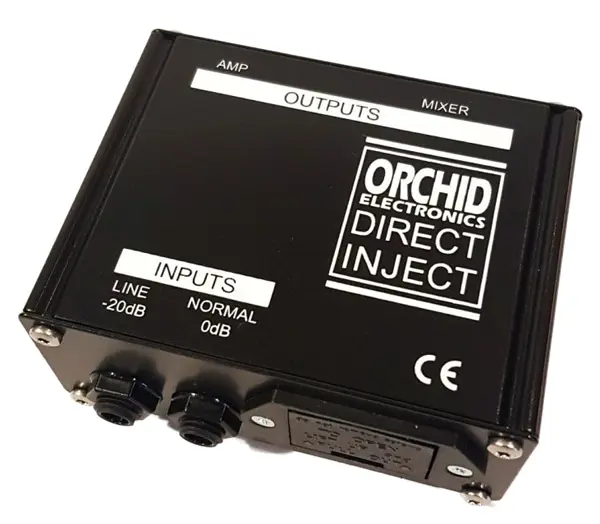DI Boxes
DI Boxes and Their Use in Live Sound

The DI (Direct Input or Direct Injection) Box is one of the less visible but nevertheless valuable parts of a PA system.
What it is
Usually, it is a small box with one or more inputs (usually 1/4″ jack sockets, although some also have phono and/or XLR input sockets) and one or more outputs (always one balanced XLR socket, sometimes one or more jack sockets as well).
What it does
A DI box converts an unbalanced, high impedance signal (the kind of signal generated by most pickups and contact mics) into a balanced, low impedance signal (the kind of signal required by most desks). It also isolates the output signal from the input signal (and most also incorporate an earth lift facility), so it can be used - as a temporary measure in an emergency - to cure ground loop problems in other parts of the signal chain (e.g. between desk and power amplifier).
How it works
DI boxes come in two main flavours: Active and Passive.
Active DI Boxes use electronic circuits to convert and isolate the output signal from the input signal. For this reason, they always require power. Most active DI boxes can use batteries - historically 9V PP3, but 1.5V AA are now common too - or phantom power (and our own can use either source). However, some DI boxes cannot run on phantom power (i.e. they need batteries), and some cannot use batteries (i.e. they won't work unless the desk can supply phantom power). A few varieties will run from separate power‑supply units.
Passive DI Boxes use transformers to convert and isolate the output signal from the input signal. They are usually cheaper than active DI boxes, and do not require any power. However, the reactance of a transformer increases as frequency rises, so most passive DI boxes will exhibit some high-frequency signal loss. In all but the cheapest passive DI boxes this will not greatly affect the signal within its useful range, and the degree of difference is comparable with the difference between dynamic and condenser microphones.
How do you use it?
If all else fails, read the manual!
You plug a lead carrying the source signal into the input socket, and connect a balanced mic lead to the output socket. You connect the other end of the mic lead to the desk or multicore, switch the phantom power on, and forget about it, unless:
- It distorts (in which case either reduce the input signal at source, or reconnect/switch to a less sensitive input). Exhausted batteries can also cause distortion, so try replacing the battery if you are using one;
- The output is too small, and needs too much gain at the desk (in which case either increase the input signal at source, or reconnect/switch to a more sensitive input);
- It doesn't seem to be working (in which case check on/off and mute switches if it has them, as well as the connections and the phantom power or battery).
Do you need one?
You will benefit from using a DI box if:
- The output signal from an instrument (e.g. keyboard, acoustic guitar pickup, violin contact mic) is unbalanced and/or high impedance, and the desk inputs are more than a few metres away; or
- Connecting the instrument directly to the desk's input creates a ground loop (characterised by a hum or buzz at 50 Hz and/or whole multiples of that frequency). This situation can arise where on-stage effects-units or amplifiers form part of the signal path, and have earthed power supplies.
What sort do you need?
It is good practice to install new batteries in all battery-driven devices before the start of any show (so you can be confident they won't die during the encore). This involves the bother and expense of changing batteries frequently, as well as remembering to change them. A passive DI box does not need batteries. If phantom power is not usually available, a high-quality passive DI box will probably be your best option.
Otherwise, active DI boxes are generally a better choice. However, you may want to look for some or all of the following facilities, whichever type you go for:
- Extra outputs (either paralleled with the input, or separate buffered sends), so you can use an on-stage combo or monitor amplifier as well as providing a balanced signal for the desk;
- Inputs that cater for both small (pickup level) and large (line or even loudspeaker level) signals. Some DI boxes have a switch for this, and others have an extra input socket, but beware if a DI box has neither;
- A ground-lift switch, or built-in ground-compensation circuit;
- A light to indicate that it is switched on and receiving power. This also acts as an instant line-check: if you turn on the channel phantom power and the DI box light comes on, you know you have a good connection to the right channel.